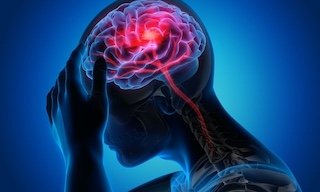

Living with migraines is a harrowing experience. The relentless throbbing, sensitivity to light and noise, and accompanying nausea can turn a regular day into a debilitating one. Migraine triggers are wide-ranging, but certain foods and drinks are often cited as common culprits. Unravelling these Migraine trigger foods can be a critical step in managing your migraines more effectively. 💎
Understanding Migraine Triggers
The wide range of potential migraine triggers can be as varied as a change in hormones, stress, particular smells, shifts in weather, and, of course, specific foods and drinks. These triggers, when consumed or encountered, can initiate the release of neurotransmitters that incite a migraine episode. Therefore, gaining a solid understanding of your individual triggers, especially those linked to your diet, can be a fundamental element in managing your migraine episodes more effectively, given that dietary triggers are often the easiest to control.
Migraines can be triggered by various factors, and certain foods are known to be common triggers for some individuals. It’s essential to recognise that triggers can vary from person to person. Here are some foods that are commonly reported to trigger migraines:
1. Caffeine:
- Excessive consumption or sudden withdrawal.
- Caffeine presents a unique predicament when it comes to migraines. For some, it can act as a short-term remedy, easing the pain of a burgeoning migraine. Conversely, too much caffeine or sudden withdrawal from it can provoke a migraine attack. Hence, the key lies in understanding and managing your caffeine consumption. Overindulgence in caffeine-rich foods and drinks such as coffee, tea, chocolate or energy drinks might exacerbate your migraine episodes rather than provide relief. Therefore, it is imperative to monitor and regulate your caffeine intake.
2. Alcohol:
- Red wine, beer, champagne, and spirits.
3. Tyramine-Containing Foods:
- Aged cheeses (cheddar, blue, feta), smoked fish, and certain processed meats.
- Tyramine is a natural compound that’s found in an array of foods and is often indicated as a significant instigator of migraines. This amino acid can interfere with blood pressure levels, which could in turn incite a migraine episode. Foods that contain a high concentration of tyramine encompass aged cheeses, fermented produce, smoked fish, specific types of beans and draught beers. This unfortunate reality implies that indulging in your cherished cheeseboard or preferred brew could be a factor in triggering your migraine episodes.
Suggested: Foods for Heart Health
Herbal Teas for Weight Loss
4. MSG (Monosodium Glutamate):
- Commonly found in processed and restaurant foods.
5. Chocolate:
- Contains both caffeine and tyramine.
Suggested: Wake Up Refreshed: No more Waking up Tired
Foods to Treat Fatty Liver
Detox Water: Appetite Suppressant Detox Water
6. Artificial Sweeteners:
- Aspartame and other artificial sweeteners.
7. Citrus Fruits:
- Oranges, lemons, limes, and grapefruits.
8. Nuts and Seeds:
- Especially peanuts, pine nuts, and certain seeds.
9. Dairy Products:
- Some individuals may be sensitive to certain dairy products.
10. Processed Meats:
Hot dogs, bacon, and deli meats.
11. Certain Vegetables:
Onions, tomatoes, and some beans.
12. Baked Goods:
Freshly baked yeast products.
13. Certain Fats and Oils:
Fried foods and certain oils.
14. Salty Foods:
Excessive salt intake.
15. Preservatives and Additives:
Nitrites (used in preserved meats), sulfites (used in dried fruits and wine).
16. Dehydration:
Lack of water or inadequate fluid intake.
It’s important to keep a migraine diary to identify individual triggers and patterns. Elimination diets under the guidance of a healthcare professional can help pinpoint specific triggers for each person. Additionally, stress, hormonal changes, lack of sleep, and environmental factors can also contribute to migraines. If you suspect certain foods are triggering your migraines, consider consulting with a healthcare provider or a registered dietitian for personalized advice and strategies.
Importance of a Food Diary in Identifying Triggers
Utilising a food diary can be a beneficial tool in detecting your personal migraine triggers. This involves documenting your daily food and drink intake and observing any consequent migraines, enabling you to potentially unearth recurring patterns. Although this may require a bit of diligence, the potential rewards in terms of managing your migraines more efficiently make it an endeavour worth pursuing. This process of observation and recording can provide crucial insight into your dietary triggers, aiding in your overall strategy for controlling migraines.
Personalised Approach to Diet and Migraines
Bear in mind that each individual’s migraine triggers will differ, and what initiates an attack in one individual may not have the same effect in another. Therefore, a tailored approach is essential. Employing tools such as a food diary, combined with professional healthcare advice and possibly incorporating an elimination diet, can aid you in pinpointing your specific triggers. This strategy paves the way for a dietary plan that reduces your susceptibility to migraine attacks. 💎
